|
|
|
Problem Red Sea Fishes
These are just some of the fishes that we have photographed which we have been unable to positively identify. All the photographs have been sent to leading ichthyologists who specialise in particular families of fishes, for their advice and comment. All have been extremely helpful, and have solved a lot of our problems, but sometimes a photograph is not enough for an expert ichthyologist - to positively identify a species it must usually be carefully examined by an expert. Unfortunately, expertise and research facilities are not available, or absent, locally, so the benefits of modern communications technology are amply demonstrated to us in our research activity.
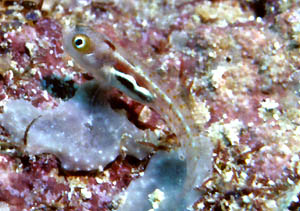 |
BLENNY This should be Alloblennius pictus which is known only from the Red Sea; we expect to confirm this ID soon. The doubt arises from a mix up of data shortly after it had been described. A correction paper will be published soon. Photographed on the Farasan Bank, but also seen near the outer reefs around Jeddah, and south of Jeddah. A very small species, only about 2.5cm, and very shy. PS - The correction appeared in Volume 4(4), August 2001, of 'aqua, Journal of Ichthyology and Aquatic Biology'. |
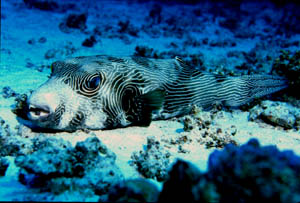 |
PUFFERFISH The leading expert on Pufferfishes suggests that this may be a new species. It has many of the characteristics of the large Arothron Pufferfishes, and resembles stellatus. However, this species has lines, not spots, on its body. A specimen needs to be examined and described to confirm it as a new species. Photographed at a popular beach north of Jeddah. |
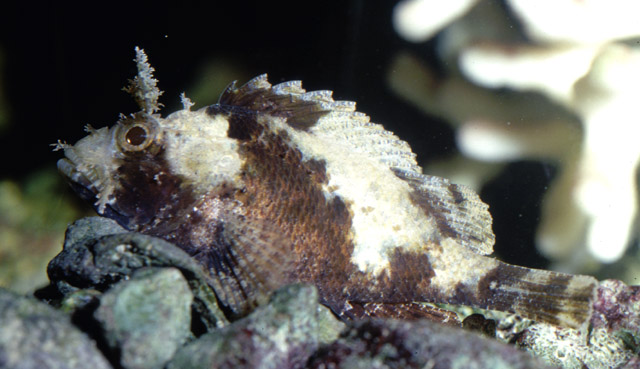 |
SCORPIONFISH At first glance this small Scorpionfish looks like Sebastapistes strongia, usually identified by the black blotch under the leading dorsal rays, and the bars under its chin. However, although having these characteristics, the strong colour contrasts are not representative of the species, so it may not even be Sebastapistes. Caught south of Jeddah in shallow water. |
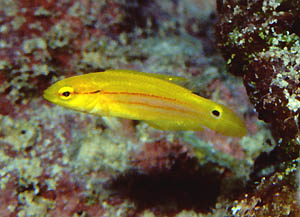 |
WRASSE The expert on Labrid fishes believes this to be of the genus Bodianus. It looks very similar to B. bimaculatus, which has not been reported in the Red Sea. This species is confirmed as B. bimaculatus |
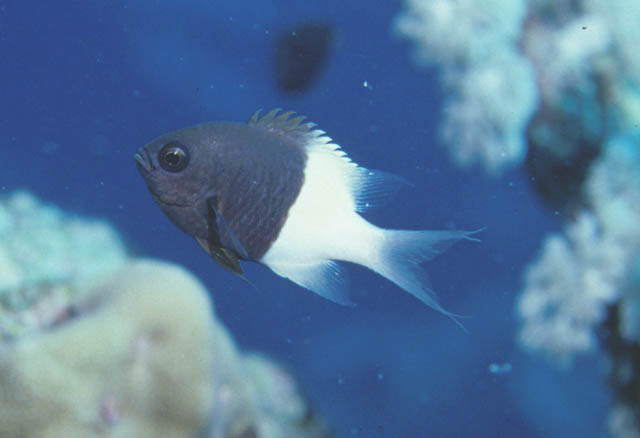 |
DAMSELFISH This may look at first glance like Chromis dimidiata. Closer examination will show that the colour demarcation line is further forward than dimidiata. We collected specimens and sent them for examination in the US.The result is the description of a new species of damselfish for the Indian Ocean, Chromis fieldi. C dimidiata is endemic to the Red Sea. Published in 'AQUA', January 2013, by Randall & DiBattista.. |
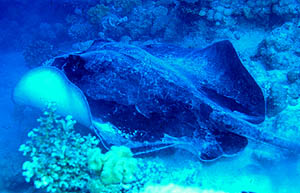 |
STINGRAY Our first guess is Dasyatis thetidis, the Thorntail Ray. Although not reported from the Red Sea there is no reason why it should not be present. Identification is based on the presence of dorsal tubercles extending into its tail. Photographed just north of Jeddah at 15m depth. |
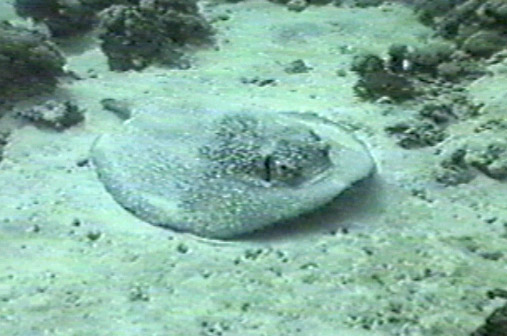 |
RAY Urogymnus africanus (Urogymnus asperrimus is now regarded as a junior synonym) is known from the Red Sea. This photo taken on the Farasan bank represents our only sighting and is a tentative identification based on the disc shape and the presence of tubercles all over the disc. It appears to have lost a large section of its tail. |
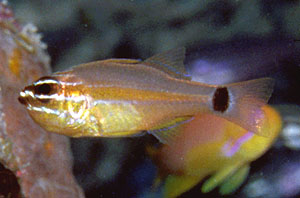 |
CARDINALFISH This cardinal is unlike any that we have seen before in the Red Sea. A male is shown and it was in a group of 4-5 others sheltering under table coral at 80 ft depth. The thick lateral orange stripe is very prominent. Photographed near Dhaban north of Jeddah. ID - Confirmed as Apogon pselion (11Dec00) |
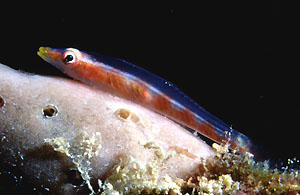 |
GOBY This is the largest member of the Bryaninops/Pleurosicya group that we have seen. Dr. Helen Larson suggests that it may be either P. elongata or P. plicata, but points out that neither of these species is known from the Red Sea. Photographed south of Jeddah. |
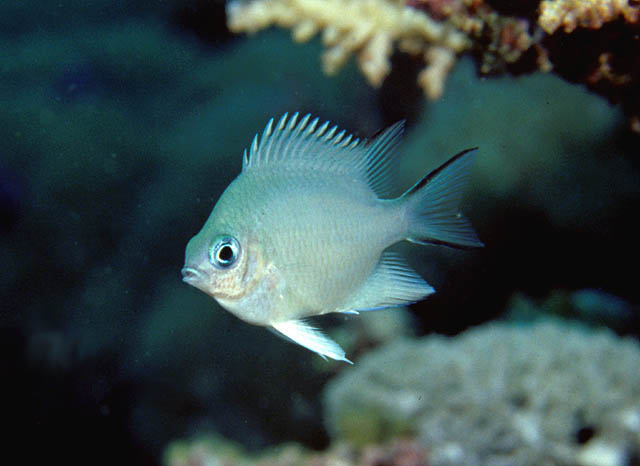 |
DAMSELFISH
For some years now the Red Sea population of Amblyglyphidodon has been a puzzle to us.Two species are recognised, but we have always suspected there to be a third, as shown here. Dr Gerald Allen will shortly publish a description of a third species, A indicus - this may be it. (March 2002) |